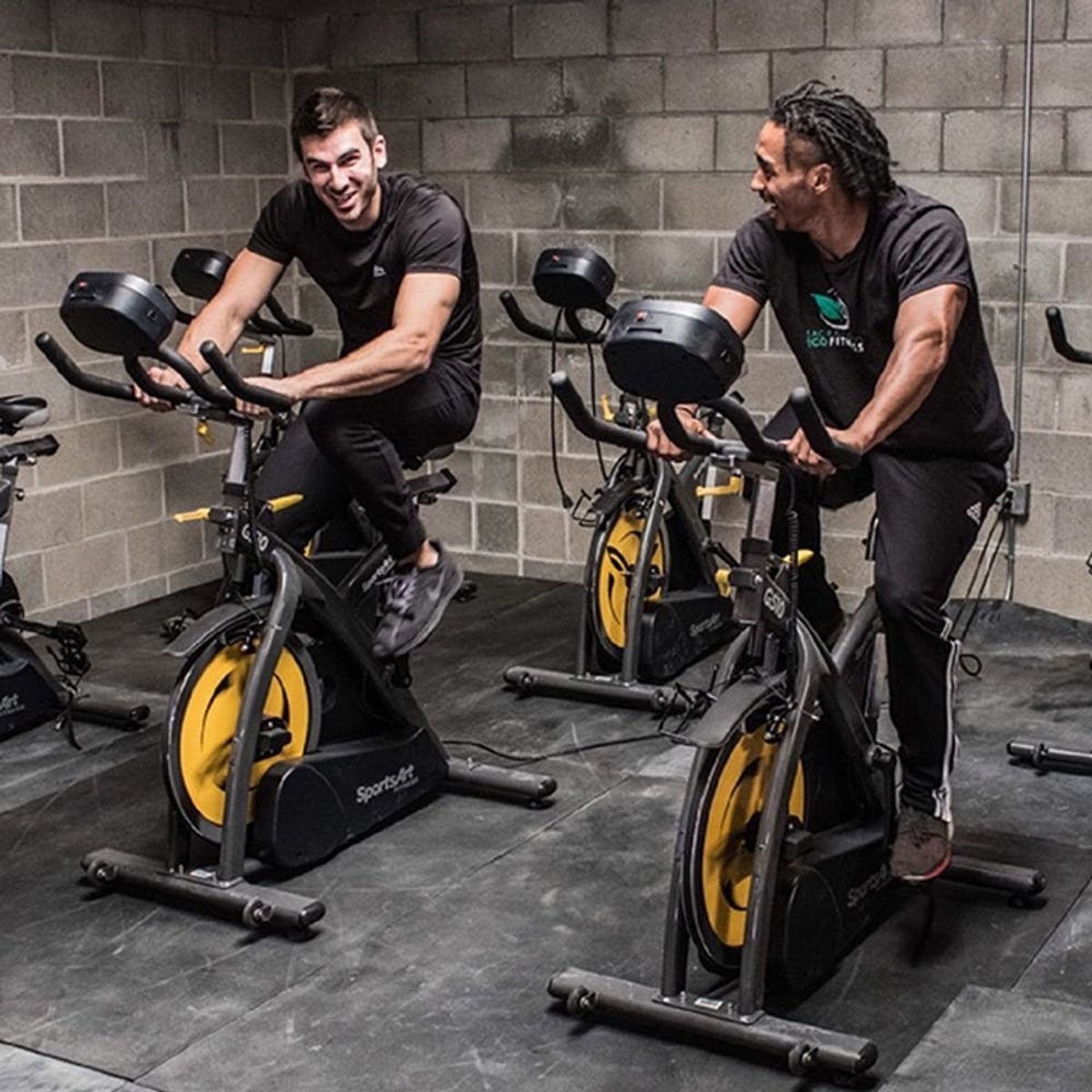Welcome to the future.
This California Gym Is Turning Exercise into Electricity

Welcome to the future, where gyms are officially powered by the energy from our workouts. At Sacramento Eco Fitness, exercise machines convert human energy into electricity, which is pretty mindblowing. We’ve seen fitness-powered tech before, like the step- and cycle-powered AMPY charger, and the soccer ball-meets-portable generator, Soccket. But the self-sustaining gym concept takes green living to a whole new level.

How do gyms convert exercise into electricity?
So how, exactly, can your workout power a building? Without going full Bill Nye, here’s the deal: Specially designed green fitness equipment can harness the energy you use when you’re pedaling a bike or moving on an elliptical or treadmill and transform it into usable electricity. Sacramento Eco Fitness uses SportsArt ECO-POWR machines, which have built-in micro-inverters and juice up the electrical grid via standard wall outlets. Since this is a growing industry, you might see different approaches in different gyms; some machines only power a gym’s electrics while they’re in use, while other equipment is set up so that energy can be stored in batteries.
How much electricity does one workout generate?
A rep for Sacramento Eco Fitness says that one cycling class at that facility produces enough energy to run two fridges for 24 hours. The impact of your workout depends on a range of factors, including your height, your weight, and your intensity level. As a general rule of thumb, higher numbers across these categories equal higher electrical output.
What are the benefits of going green?
After installing ECO-POWR cycles, Sacramento Eco Fitness saw their monthly electricity expenditures drop from $680 to $30. That’s pretty huge! And the gym has no intention of stopping there. Recently, the facility added a SportsArt treadmill capable of converting human energy to electricity, which should capture and store even more power. The gym hopes to share its energy with surrounding businesses within the next couple of years.
The high-tech equipment also inspires gym members by showing them exactly how many watts of electricity their workout is generating. Because let’s be honest: A real-time view of how you’re offsetting your carbon footprint is way more positive motivation than the usual calorie-counting treadmill display.
Where else can you power your gym?
For Portland-based Adam Boesel, creator of the Green Microgym, human energy was always part of the business plan; his facility has been drawing electricity from indoor cycling since it opened in 2008. Boesel went on to develop green fitness equipment for gyms and consumers alike; Green Microgym Belmont, now owned by Daniel Caplan, still generates power from its members’ activity. Electricity-converting spin bikes have also been spotted at Middlebury College, New York Sports Clubs, and Maryland’s Columbia Athletic Club.
Does your gym have any eco-friendly features? Tell us about it @BritandCo!
(Photo via Sacramento Eco Fitness)



















